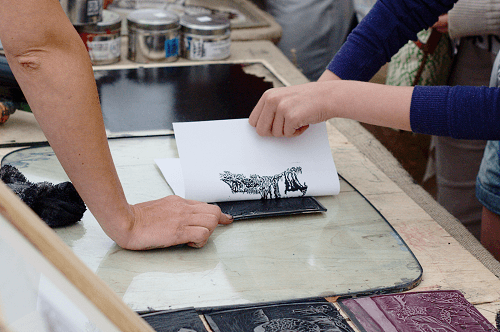
How to Print Special Effects
There is a wide range of fresh and exciting special printing effects to experiment with that can really enable your advertising and marketing materials to appear unique and attract attention. Your ads can use cool printing techniques to display various shapes, textures, and visual stylings—from foil stamping and die cutting to embossing and debossing.
Why Use Special Effects?
Special printing effects are attractive to the eye, and they also prompt people to use their sense of touch. Scientists have proven that tactile stimuli have a deeper connection to the memory than comparable visual or auditory stimuli. By investing in some cool printing features for your printed materials, you make a longer lasting impression on your potential customers.
If you want to learn more about cool printing processes, read on for a few of the cutting edge special printing effects available for those who feel compelled to stand out from the crowd.
custom die cut cards
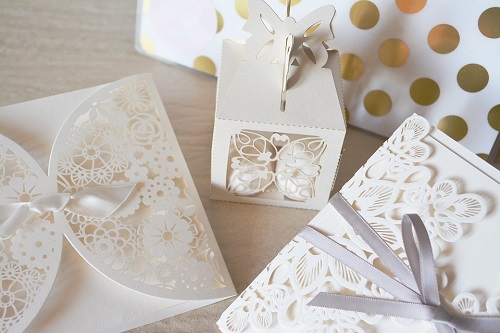
Die Cutting
Die cutting is a special printing effect that uses steel cutting dies to cut specific designs and shapes into thin materials such as, but not limited to, paper. Die cuts refers to the areas of the material that are sheared away by the die’s blade in a fashion that is similar to a cookie cutter. This cool printing technique is usually colorless, though that may depend on the case.
Patterns and Shapes
Die cutting creates patterns from the decorative shapes that get cut out. Many times, the cut piece will be incorporated with a larger piece to provide a window-like or frame effect, allowing part of an interior image to peek through. Other times, the main shape of an object is formed by die cutting the paper in a specifically designed manner.
A die cut can be as simple as a slit created to hold a business card to a folder by its corners, or as intricate as a complex design for a greeting card. With a tantalizing combination of tactile and visual appeal, these special printing effects can get quite creative. They tend to enhance images and text by allowing them to stand out from the background.
Popular Designs
Some of the more common uses for die cutting are door hanger slits, holes, flaps, rounded corners, and pop-ups. Most printers have the majority of the most common dies installed, and the majority of competent print shops will have a large variety in stock. You may even be able to specially order metal dies for custom orders.
custom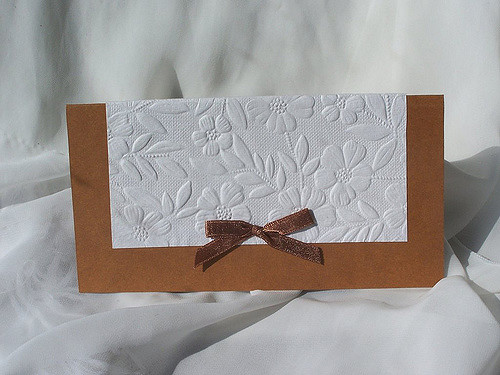
Embossing and Debossing
Embossing and debossing are related special printing effects that use metal dies, pressure, and heat to transform a paper’s surface. They’re usually used to texturize business cards and to design beautiful invitations, such as those used for weddings.
Embossing
Embossing uses male and female dies to raise graphics and lettering from paper to create a visually enticing three-dimensional effect. Many business owners use this cool printing technique on business cards and brochures, allowing them to stand out from their competitors.
Debossing
Debossing is a similar process, though the male and female dies lower the surface of the paper to create lettering or an image. The lettering is pressed inward through the same basic technique as embossing, with two metal dies meeting on the paper.
Colorful Prints
Like die cutting, this special printing effect process can be colorless, though it doesn’t have to be. Colorless embossing and debossing is referred to as blind embossing, while the alternative incorporates foils to create colored print.
Embossing and debossing is usually done on textured, cover-weighted paper, such as business cards, book covers, and folders, though it can sometimes appear on finer papers as a fancy letterhead.
Foil stamping
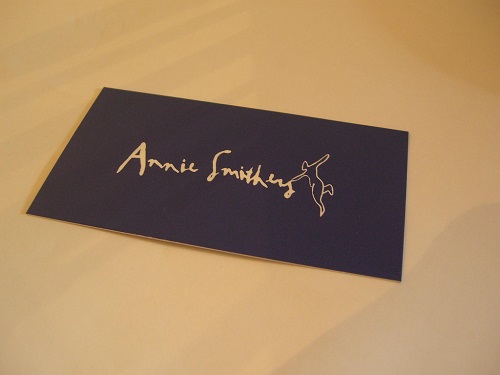
Foil Stamping
Foil stamping is a cool printing technique that employs a heated die to stamp and adhere a mylar-backed material to paper. These foils come in several different materials and colors, including pearlescence and metallic styles. They are even produced in a myriad of designs and patterns.
The special printing effect gives the stamped lettering or graphics a shiny, professional appearance. For that reason, foil stamping is quickly becoming the preferred method of printing various branded materials.
The Process
The process entails heat and pressure from a die that transfers metallic paper, or foil, onto the intended surface to create shiny graphics, lettering, and designs. As dies are heated, foil will only stick to the surface in the design of the die and in the areas that are imprinted.
Often referred to as “dry printing,” foil stamping does not use any type of ink for printing purposes. A dry printing process is any method that utilizes carved metal plates or dies for printing rather than the ink, magnetism, and plates used in traditional printing.
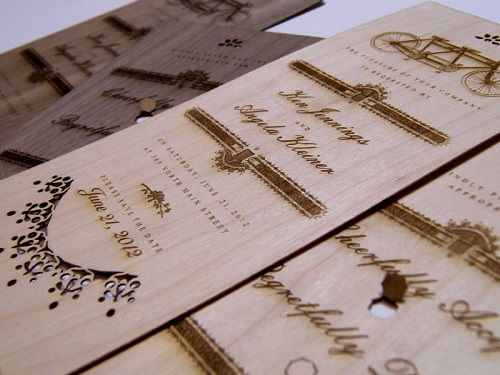
Metallic Inks
Metallic inks are a less expensive alternative to foil stamping, but still create special printing effects that catch the eye. While the results may appear similar, metallic ink is an actual toner used by printers to acquire the same shiny effect. You can purchase metallic ink cartridges for your own home or office printer if needed.
Metallic ink contains gold or silver flakes, which allow text and graphics to pop, especially when contrasted with dark-colored paper. This cool printing technique should use the metallic inks sparingly to focus the eye on a special offer or feature, since overuse can overwhelm your potential customers.
Maximizing the Effects
It is probably advisable to apply a coating to seal in the dye, so the metallic flakes do not transfer to papers stacked on top of the printed sheet. Also, without a proper coating, the tiny chunks of metal in the ink can sink into the paper and disappear, limiting the ink’s ability to reach maximum shine and sparkle.
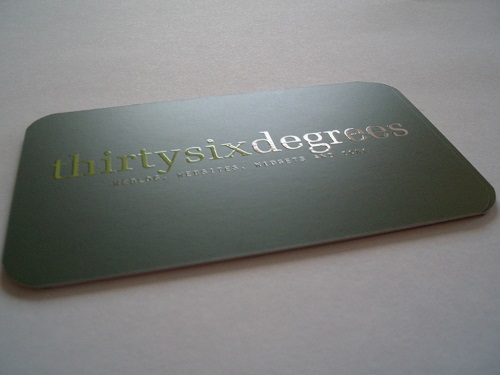
Coatings
There are a variety of coatings and special printing after effects that have gained prominence in the printing world recently. While glossy coatings are an industry standard, aqueous coatings, which make dry papers appear to be wet, are gaining popularity. There are also some newer technologies on the rise, such as Soft Touch, Spot UV, and old stand-bys including varnish and laminate coatings.
Soft Touch
Soft Touch is a rubbery coating that dries quickly and gives paper a soft, unmistakable texture. The technology is very similar to the coating found on several types of laptops and cell phone cases. It is practically matte, absorbing light rather than reflecting it. Also, because it is water-based, it is environmentally-friendly and recycles easily.
Spot UV
Spot UV coating is applied to matte coating to cure particular areas of flat paper into a slightly glossed section designed to capture visual interest. This area of focus usually contains text, graphics, or images that can be tilted back and forth to create a holographic effect, resulting from reflected light.
Varnish
Varnish is a liquid shellac that is added to a printed piece of paper to provide it with either a satin, glossy, or dull finish. Similar to a clear top coat of paint, varnish is applied as a final layer of ink over a printed item. It protects the final product from smudges, scratches, and other types of damage, such fingerprint marks. Its crisp effect can enhance readability of an item by reducing glare. It is also applied to photos printed on matte paper in order to make them “pop” and to strengthen them so they last longer.
Laminate
Curl-free laminate is a film that is applied to high-use paper, such as the covers of paperback books. It provides either a glossy or a matte finish, but its main function is to provide protection and lasting durability to paper that will be continuously handled. Often times, this coating eliminates scratches, scuffs, and tears.
A Plethora of Options
There is a vast array of special printing effects. Using any one of these will encourage customers’ natural perception that your company offers higher quality and elite services, due simply to the distinguished appearance of your advertising.
If you are interested in putting a bit of flair into your marketing materials, these special printing effects should do the trick. It’s important to note that most are added at the finishing phase of your project, and they will cost a little extra. However, your refined brochures, invitations, and pocket folders will be well worth the money.
For more ways to learn more about cool printing techniques, visit 1ink.com for the latest innovations in the printing industry. Shop our remanufactured and compatible ink and toner cartridges for the highest quality prints at the lowest cost!
